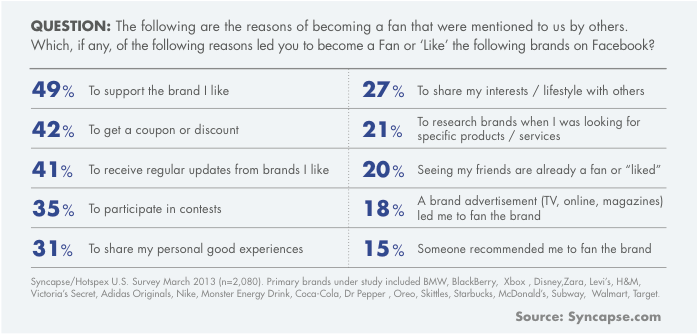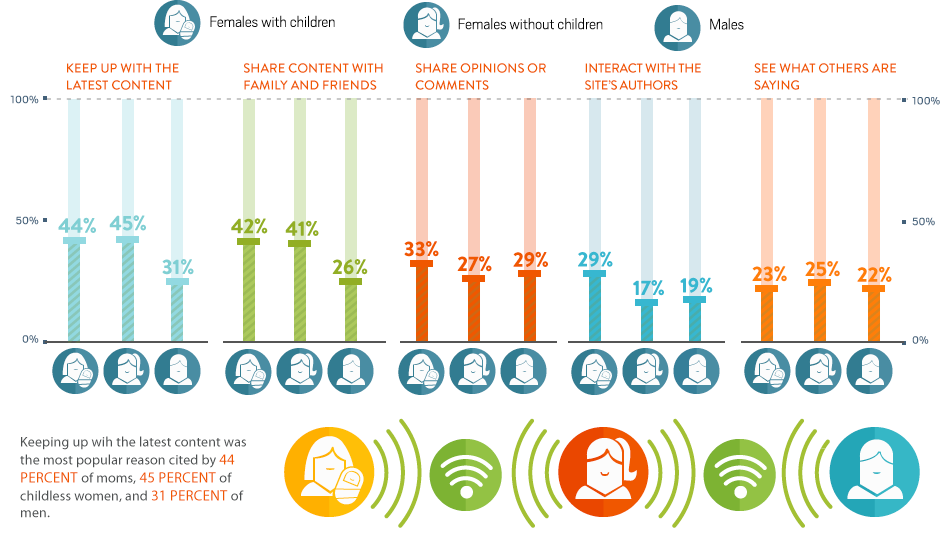By adaptive - July 1st, 2013
Gaining followers has been the focus for many brands since the inception of social media. However, corporations still need to clearly understand why their customers have become their brand advocates.
The latest statistics from Canadean Custom Solutions have concluded that over three-quarters of the adult population now use social media networks to communicate, with a fifth stating they intend to increase their use of these networks over the next six months. For brands that are continuing their journey to understand how social media now influences their customer base, this increase in usage places an imperative on how they interpret and respond across the social media landscape.
Says Michael Hughes, Research Manager at Canadean Consumer: “Social media sites allow consumers to interact with likeminded others on specific sites, and in turn begin to follow trusted brand ambassadors for advice and inspiration – even if they have never actually met the person. However, whilst major brands may benefit from people turning to social media to share tips and advice, small independent shops will miss out – with shoppers failing to pass on information on any good deals they see on the local high street to their neighbours who also use such stores.”
What has become abundantly clear when social media is considered within the context of the brand/consumer relationship is that brand advocates tend to have some previous experience of the brand concerned. Research of major brands across several categories has concluded that a Facebook Like for instance, will be prompted by some other contact the consumer has had with the brand. Increasingly these are physical touchpoints within stores for instance, and the use of mobile data devices has changed how customers see and interact with brands.
More than a Like
The value that is now being placed on customer interaction is driving why consumers are increasing their engagement with brands. A Facebook Like is now clearly not as valuable as a pin on Pinterest, as research has clearly shown that the brand value from a pin far outstrips a simple Like on Facebook.
Also, the mindset and action of Pinterest users is also clearly more commercial in nature. Understanding these key drivers is vital to fully understanding the relationships that brands now have with their customers. These groups of people also move from simply casual acquaintances with a Like to close friends, as they become advocates. Understanding this transition is critical.

And response time on Facebook in particular seems to be gaining in importance according to Social Bakers that found that 60% of Facebook questions are now being answered, which is an increase of over 100% on previous studies. Brands it seems have realised that they need to engage with their followers in almost real time to gain not only their trust, but also their patronage.
Something for nothing?
Gaining a fan or a follower is also becoming increasingly difficult, and needs a different approach that depends on the social network being considered. This is the conclusion of research carried out by Piqora:
“Pinterest generates more tangible business value than any other “social network”. The primary reason for this is that it’s not just a social network. Pinterest is much more than that. Pinterest has driven a shift in the way people discover products and things they care about. Humans are capable of processing visual information far more rapidly than text, and the “visual web” allows rapid intake and segmentation of information. Driving the proliferation of the “visual web”, Pinterest is helping people more rapidly discover products, collect them, and subsequently purchase them.”

Syncapse also advises: “Since being a brand user is usually a prerequisite to becoming a Fan in consumer goods categories, marketers should prioritize their Fan acquisition investments on converting existing customers. Not only is acquisition cost and conversion friction lower, but also the investment in a higher quality Fan base will reap rewards down the line, and this is true for both lower-cost and higher-cost consumer brands.
“Higher quality Fans tend to attract greater numbers of other high quality Fans, and they also tend to advocate more. Establishing a direct channel with Fans (who are customers) also empowers marketers to communicate more effectively and upsell to their most valuable audience segment. Establishing a firm Fan base (of existing users) also creates powerful opportunities for lookalike profile modelling, which empowers marketers to improve targeting against both customers and prospects.”
With Piqora concluding: “Avoid the temptation to think of followers as similar to Facebook fans. Following any ID on Pinterest is a more serious indicator of interest and loyalty than a “like”. This is indicated by research from ComScore that has shown Pinners follow fewer entities on Pinterest than they would ‘like’ on Facebook. Research shows that Pinners follow on average 20-50 entities on Pinterest, versus 130 on Facebook. The good news for brands is that as a proportion of overall following, Pinners follow 50% brands and retailers, versus less than 5% on Facebook.
“We believe the reason Pinners follow a select group is because their feed can quickly become unmanageable. Unlike Facebooks EdgeRank algorithm, Pinterest is a feed of all recent activity, so as a user, following 50+ brands can get out of control quickly and feel very overwhelming.”
Why your corporation gains Facebook Likes, a pin on Pinterest or Twitter followers is now vital information that must be gathered and understood. What motivates consumers within the social space is a new paradigm that enterprises need to fully understand if the commercial opportunities that these relationships can deliver are to be fully realised.
